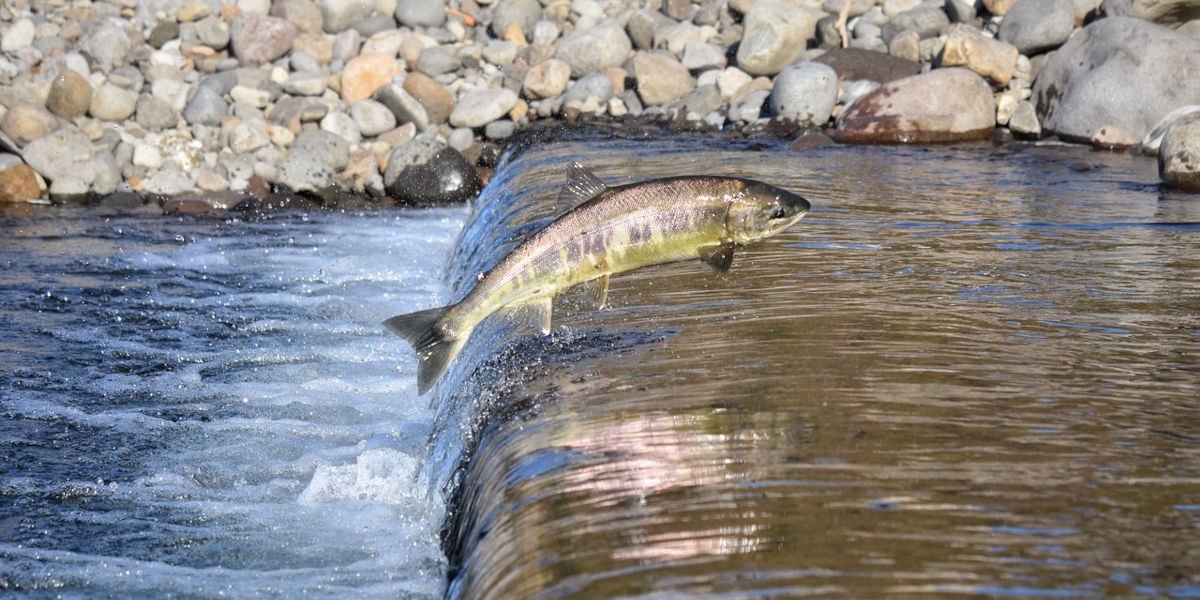When pondering the wonders of nature and wildlife, we're often left in awe at the ruthless determination and complexity of living beings. Such is the case when contemplating the salmon's incredible journey of migration during their lifetime. "How do salmon migrate?" is a question that has intrigued scientists, anglers, and nature enthusiasts alike. In this article, we dive deep into understanding fish migration, focusing on the extraordinary salmon life cycle and why it has considerable ecological significance.
The Miraculous Journey Begins: Beginning of Salmon Life Cycle
Unbeknownst to many, the term "salmon" encompasses a variety of species belonging to the Salmonidae family. Regardless of the species, the magical journey of every salmon commences from humble beginnings in freshwater streams or rivers, where female salmon lay their eggs in gravelly nests known as redds.
The eggs stay hidden in the gravel throughout winter, insulated from the frigid temperatures. In the spring, tiny salmon, known as alevins, hatch. They remain in the protective gravel, living off the nutrients from their yolk sac until they're strong enough to face the currents of their birth waters.
Eventually, the alevins transform into juveniles known as fry and then into smolts, experiencing physiological changes that prepare them for the extraordinary journey ahead - the transition from freshwater to saltwater environments.
Heading to Sea: Understanding How Do Salmon Migrate
Though we have a basic grasp on the salmon life cycle, one may still wonder, "how do salmon migrate from freshwater to saltwater?" The process by which they achieve this feat is known as smoltification, a dynamic transformation enabling these resilient fish to adapt from freshwater to the harsh, saline conditions of the open ocean.
The precise triggers of smoltification are still a subject of ongoing scientific studies. However, we know that these changes include a shift in dietary preferences, behavioral changes, and most importantly, alterations that allow salmon to handle a higher salt concentration. The transition is an exquisite example of Mother Nature's adaptability and resilience.
Once in the ocean, which can range from a few months to several years depending on the species, salmon experience rapid growth. They travel thousands of miles during their ocean stay. The vast, nutrient-rich marine environment nurtures them into formidable adult fish, capable of completing their next migration: the journey back to their natal streams.
For millions of years, salmon have embarked on an incredible journey. Traveling thousands of miles from their ocean habitats to the freshwater streams and rivers where they were born. Persevering through fierce, tumbling waters, dodging predators, and refusing even the most towering obstacles, they successively make their way back home to spawn. This remarkable element of their lifecycles is not just a tale of endurance and survival but also has profound implications for ecosystems, wildlife, and communities that depend on them.
Understanding Salmon Migration
In the world of migration, salmon have one of the most daunting and fascinating journeys. The journey begins in freshwater where the eggs are laid in gravel nests known as redds by the female salmon. After hatching, the salmon, called fry, spend some time in their natal streams before they transform - in a process called smolting - and become ready to initiate their seaward migration.
Utilizing the ocean's currents and magnetic orientation, the young salmon journey thousands of miles into the deep, nutrient-rich waters of the North Pacific Ocean. It's in these waters where the salmon spend majority of their lives, sometimes up to seven years, growing and maturing.
Once matured, an instinctual, biological trigger prompts them to embark on the return journey to their freshwater birthplaces. A process known as natal homing. Contrary to the downriver journey, the return challenge involves battling the currents, rapidly changing environments, and even climbing vertically up waterfalls – making it one of nature's most enduring and arduous migrations.
How do Salmon Find Their Way Home?
One of the most fascinating aspects of this journey is the salmon's extraordinary sense of direction. Scientists believe they utilize a combination of tools. First being an impressive olfactory memory that allows them to recognize the unique smell of their birth river. Additionally, they are thought to sense the Earth's geomagnetic field, serving like a natural GPS as they navigate the vast ocean waters towards home.
The internal compass paired with the scent memory successfully guides these fish back to their natal streams, where they repeat the life cycle, spawning the next generation, and then ultimately die. This cycle, as strenuous and daring as it might be, is critical for the survival and renewal of the salmon species.
Why Salmon Migration Matters?
Salmon migration plays a paramount role in maintaining ecological balance. Beyond their extraordinary journey, salmon are a keystone species in their ecosystem. They act as a nutrient link between the ocean, where they spend most of their adult lives, and the inland rivers and streams. Salmon carry these marine nutrients with them back into freshwater systems, and after spawning and death, their bodies break down and release these nutrients into the environment.
These nutrients support plant and insect growth, and subsequently, a number of species including other fish, bears, bald eagles, and, in fact, the forest itself. Besides wildlife, salmon fisheries also have a significant footprint on human communities, supporting commercial and recreational fisheries, and playing a vital role in indigenous cultures.
Given their ecological, economic, and cultural importance, it becomes crucial to understand and protect the pathways of these intrepid travelers. Disruptions caused by climate change, overfishing, pollution, and dam construction pose serious threats to salmon migration routes and natal streams-putting salmon populations, and the ecosystems they support, at risk.
Conclusion
In conclusion, the salmon's incredible journey is more than just an inspiring wildlife spectacle. It embodies a crucial biogeochemical cycle--one that's entwined deeply with other creatures and our very livelihoods. In preserving this epic, natural narrative, we have a chance not only to safeguard the salmon, but also the ecosystems that thrive because of them.




